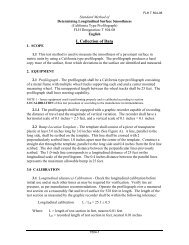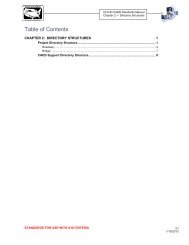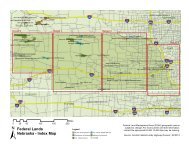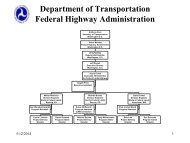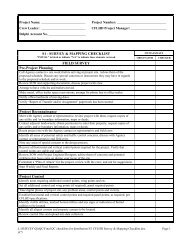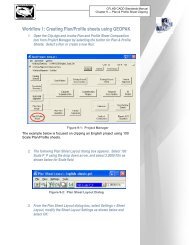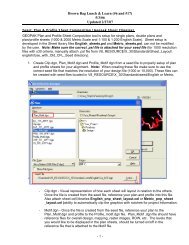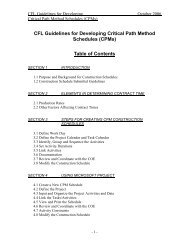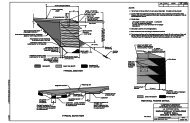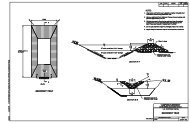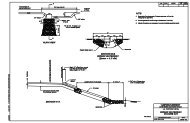CHAPTER 2 BARRIER WARRANTS
CHAPTER 2 BARRIER WARRANTS
CHAPTER 2 BARRIER WARRANTS
Create successful ePaper yourself
Turn your PDF publications into a flip-book with our unique Google optimized e-Paper software.
Barrier Warrants ________ November 2005Table 2.8: Barrier Warrant ConsiderationsConsiderationBarrier is morewarranted if:Barrier is lesswarranted if:Speed 70 km/h (45 mph) or higher 40 km/h (25 mph) or lowerHazard on outside ofhorizontal curve350 m (1,150 ft) or smallerradiusRadius larger than 400 m(1,430 ft)Hazard does not fit the Hazard is more severe Hazard is less severedescriptions in Tables2.3 through 2.6Size of hazard Very large Very smallTraffic volume Above 1,000 vpd Below 400 vpdHazard on inside ofhorizontal curve350 m (1,150 ft) or smallerradiusRadius larger than 400 m(1,430 ft)Hazard on a5 percent or greater Less than 3 percentdowngradeCrash history Clear crash pattern No crash patternAnticipated cost of Expected costs are low Expected costs are highbarriersRoadway cross Severe section elements Good section elementssectionMultiple hazards exist Many additional hazardsat the siteAesthetic impactsSerious concernsEnvironmental impactsSerious concernsTable 2.8 is intended as a guideline for barrier considerations. It is likely that specificsites will have some considerations identified in both columns and some in neithercolumn. The considerations are not necessarily equal in importance.Appendix A contains a more quantifiable procedure that is based on economic analysis.2.5.4 Bridge Rail EndsBridge rail ends on the right side of approaching traffic (near side) are rigid objects,frequently very near the traveled way. Because of their severity, they should never beconsidered “not warranted.” Even though the warranting tables in Appendix A mightindicate a bridge rail is not warranted, it should be considered “possibly warranted” andat least considered for shielding. The far side bridge rail will usually be outside the clearzone of opposing traffic for most low volume and low speed conditions. When the farside is outside the clear zone it still should be considered for shielding if any of thefollowing conditions exist:The travel lanes are 3 m (10 ft) or less.Passing is allowed and expected.There is a crash pattern.________________________________________________________________________2-18 Analyze the Need for Roadside Barriers



